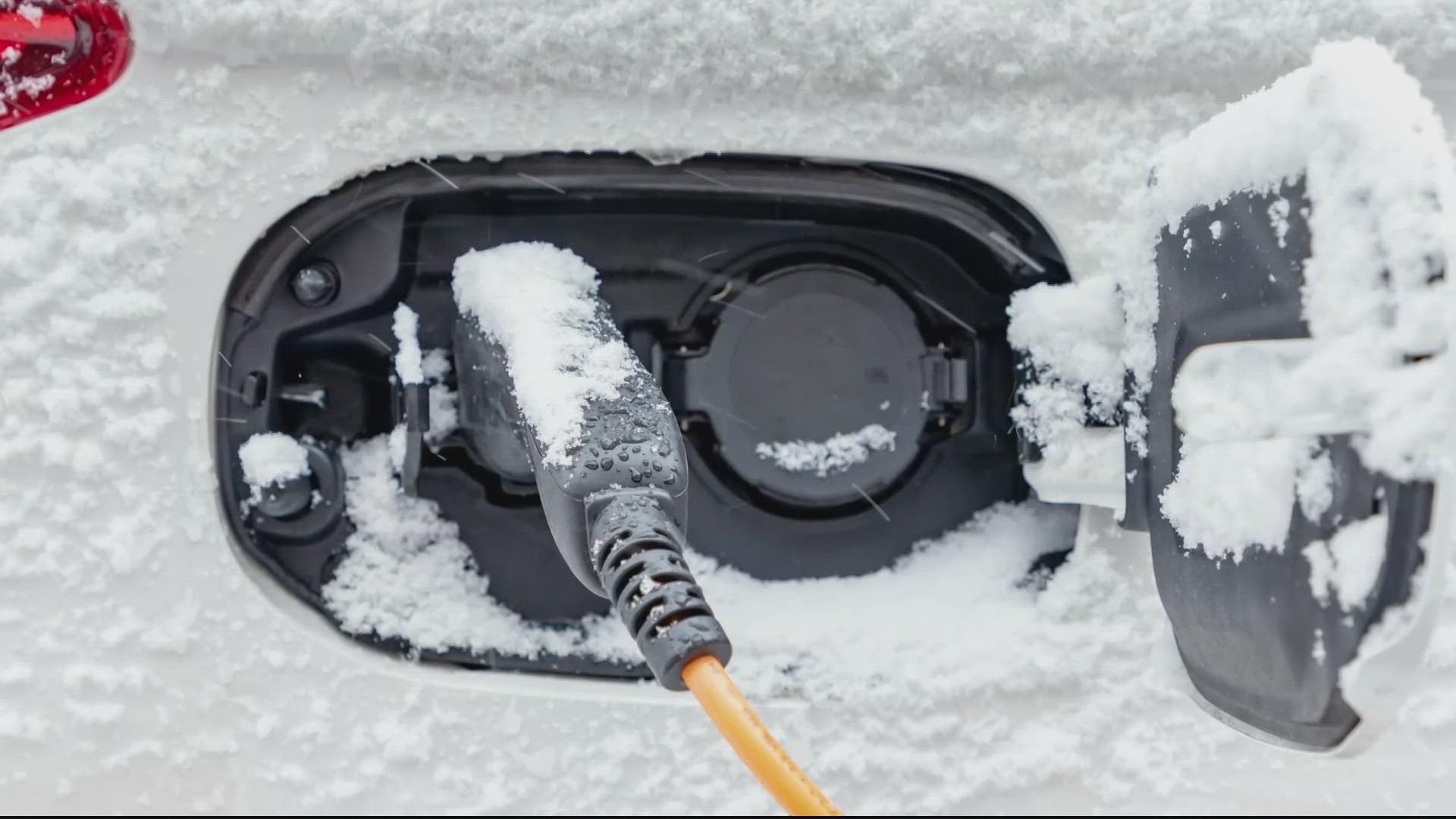BETHESDA, Md. — Lots of people are racing to get that $7,500 tax credit for a new electric vehicle built in America.
But one thing may be slowing some folks down: cold weather.
We got an email from a viewer worried about rumors kicking around the internet that electric vehicles have to be charged in a heated garage when it’s below freezing outside.
So let’s Verify: Do you have to charge your EV inside during the winter?
"Heck no! That’s an old ladies myth," said Dave Goldstein, who has been charging his plug-in electric hybrid outside in front of his house for years.
Our sources are Dave Goldstein, President Emeritus of the Electric Vehicle Association of Greater Washington. Kate Staples, Director of Electrification for Dominion Energy. And Tim Hartmann of Electrify America.
“You absolutely don’t have to keep your car in the garage, nor do you have to stay close to home to drive in the winter," said Hartmann.
“If it’s really cold outside, or really hot outside, the battery might charge a little bit slower. But it’s just because the battery is protecting itself. It will still work, but it might charge a little slower."
Just like your cellphone, an electric vehicle will manage how fast its battery will charge to extend its life. And just like people – and Goldilocks -- batteries don’t like to be too cold – or too hot.
An Idaho National Lab study found EV batteries charged about 36 percent slower at freezing than at 77 degrees Fahrenheit – but they still charged.
"There are people in Canada and Alaska who charge their cars every day in cold weather and they’ve never had a problem. So give it up. This is not a problem," said Dave Goldstein.
So we can Verify: No, you do NOT have to charge your EV inside during the winter.
Here's some more valuable information for cold weather EV driving from Electrify America, which is an EV charging network:
The U.S. Department of Energy’s cold weather testing shows a reduction in fuel economy for gas, hybrid and electric vehicles with gas vehicles reduced by 15-24% and EVs by roughly 39%. And according to University of Michigan Energy Institute, driving and charging an electric vehicle in colder weather has its nuances because temperatures below 40 degrees Fahrenheit can reduce charging power. With a bit of preparation and planning, your electric vehicle will get you where you need to go throughout the year.
Here are a few tips to help keep an EV running smoothly during the winter.
1. Charging may take longer
The vehicle controls the charging rate, not the charger. When temperatures are low, the electric vehicle’s software reduces its charging power, and for a good reason: to help avoid stressing the battery. The Idaho National Laboratory study found that at 32 degrees Fahrenheit, an EV battery took in 36% less energy than when the battery was charged for the same amount of time at 77 degrees Fahrenheit – this means the colder the weather, the more time the battery needed to charge.
"So when temperatures are colder, it’s important to plan ahead for longer charge times, whether the trip is part of your daily commute or a longer road trip. It’s also important to note that the charging rate will always decrease as the battery reaches full capacity (state of charge, or SOC), to maintain battery life and durability.
2. Pay attention to overnight changes in your EV’s range
"Check the forecast to be aware of overnight low temperatures during winter months - as cold temps overnight can lower an EV’s driving range by an average of 20%, according to the Norwegian Automobile Federation. Be mindful of that potential range reduction and pay attention to the vehicle’s console display, as some EVs can predict these range reductions during extreme temperatures.
3. Plan your charges
"Plan for stops at public charging stations to avoid finding yourself with a limited range and a lot more driving to do. Thanks to the Electrify America mobile app supported by Apple CarPlay and Android Auto, drivers can easily navigate to nearby ultra-fast charging stations and see which chargers are currently available, making it even more seamless to plan charges before and during a trip.
4. Park indoors when you can
Parking an EV in a garage with higher indoor temperatures, when possible, can help the battery charge more quickly and hold that charge longer.
5. Understand your EV’s cold weather features
Some EVs have a pre-conditioning feature that allows drivers to program or manually warm up the battery to more optimal temperatures. While this pre-conditioning process does use some battery power to provide a warming effect, it can make the battery more efficient while maximizing driving range.
By understanding your EV and its charging needs, especially during colder weather, you’ll be better prepared to rely on an electric car no matter when and where you’re driving.

